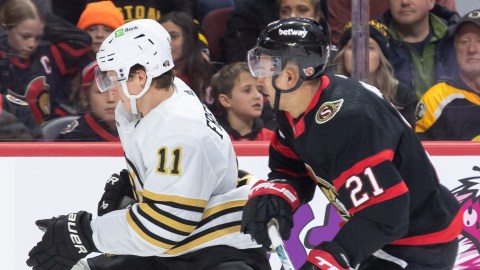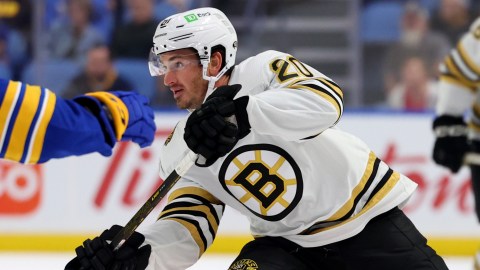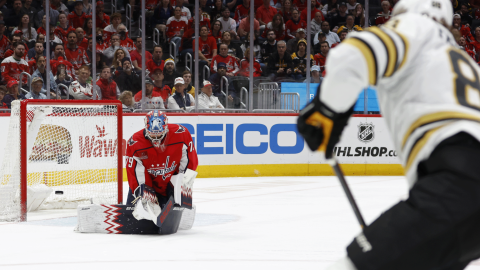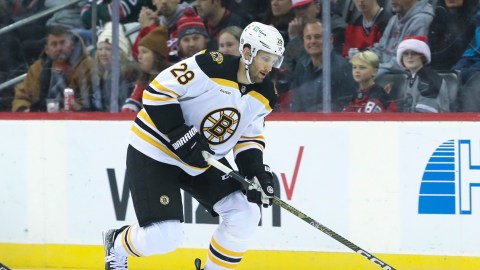Expectations were high for Tyler Seguin in his rookie season, unreasonably high from many.
That made a year of growth and development appear disappointing at times, but there should be no doubting that the 19-year-old taken second overall in the 2010 draft still has a bright future ahead of him.
He showed his immense skills in brief flashes, most notably with the six points he scored in his first two playoff appearances. He made strides in improving the weaknesses in his game, playing more conscientiously at both ends of the rink and showing a greater willingness to battle for pucks in the later stages of the season.
“It’s been a huge learning curve,” Seguin said during the Stanley Cup Final. “My defensive zone [play] has gotten a lot better I think, and I also believe my compete level and my battle skills have gotten better and I’m still improving.”
But the big question remaining is whether he can put all those elements together consistently, and how much further progress can be expected in his second season.
That second year in the NHL has often been a year of dramatic growth for the game’s top young stars. Joe Thornton, Boston’s last pick that high when he was taken first overall in 1997, took a monumental leap from 3-4-7 totals in his first year to 16-25-41 in his second, and continued to progress with 60, 71, 68 and 101 points in his next four seasons. Vincent Lecavalier, the first overall pick in 1998, followed a similar progression, going from 13-15-28 as a rookie to 25-42-67 the following year, while 2002 No. 1 pick Rick Nash went from 17 goals to 41 in Year 2.
More recently, Steven Stamkos, the top pick in 2008 and a player Seguin has frequently been compared to, went from 23 goals and 46 points as a rookie in 2008-09 with Tampa Bay to 51 goals and 95 points the following year. But Stamkos showed signs of that breakout even in his first season, scoring 17 goals in his final 28 games after managing just six in his first 51 games.
His two-game outburst against Stamkos and the Lightning notwithstanding, Seguin never displayed that kind of sustained offensive production last season. He got off to a solid start with three goals in his first eight games, but needed 27 more games to get his next three and finished the regular season with just one point in his final 19 games.
He was scratched several times down the stretch and sat out the entire first two rounds of the playoffs, finally getting back in the lineup only when Patrice Bergeron was sidelined with a concussion. He made the most of his chance with those six points in his first two games, but had just one more point in his final 11 games. He was scratched again for Game 3 of the Final, returning only after Nathan Horton was sidelined for the rest of the series with a concussion.
But Seguin’s point totals in the playoffs don’t paint a complete picture. He may not have always been rewarded for his efforts, but his effort was certainly far better than it had been for long stretches of the regular season. After finishing the season a minus-4, Seguin was a plus-5 in the playoffs. He also was credited with 10 hits in 13 postseason games after managing just 20 in 74 games in the regular season.
“I think what we saw from Tyler, to me anyway, I think he’s grown a lot from the end of the regular season to that first game he played in the playoffs,” Bruins coach Claude Julien said during the Final. “We tried to handle it the best we could [with] him being around the team and [skating in] warm-ups, and then when he got his chance I think he took advantage of it. But I see a more confident Tyler in the playoffs. He’s going to areas where before he was going there, but probably not going in there with lots of confidence. … We’re happy with what he’s brought and how it’s been handled.”
Seguin averaged just 12:12 of ice time in the regular season and 10:35 in the playoffs, playing mostly on the third line with Chris Kelly and Michael Ryder in the postseason. Ryder has moved on after signing with Dallas this summer, while second-line right wing Mark Recchi has retired. Those departures should give Seguin an opportunity for more ice time this coming season, perhaps with a chance on the second line alongside Bergeron and Brad Marchand.
Wherever he lines up, Seguin will get ample opportunity to build off the confidence gained from a season’s worth of NHL experience and the chance to contribute to a championship run. Anticipating a Stamkos-like second-year explosion would be a return to those unreasonable expectations, but continued steady development as he grows into a more integral role in the Bruins offense this season should be a safe bet.
NESN.com Bruins beat writer Douglas Flynn will be answering one question facing the Bruins this offseason each day until Aug. 8.
Wednesday, July 20: Can Tim Thomas maintain his Vezina-winning level of play for another season?
Friday, July 22: How much will the chemistry of having almost the entire roster back from last season help the Bruins?



